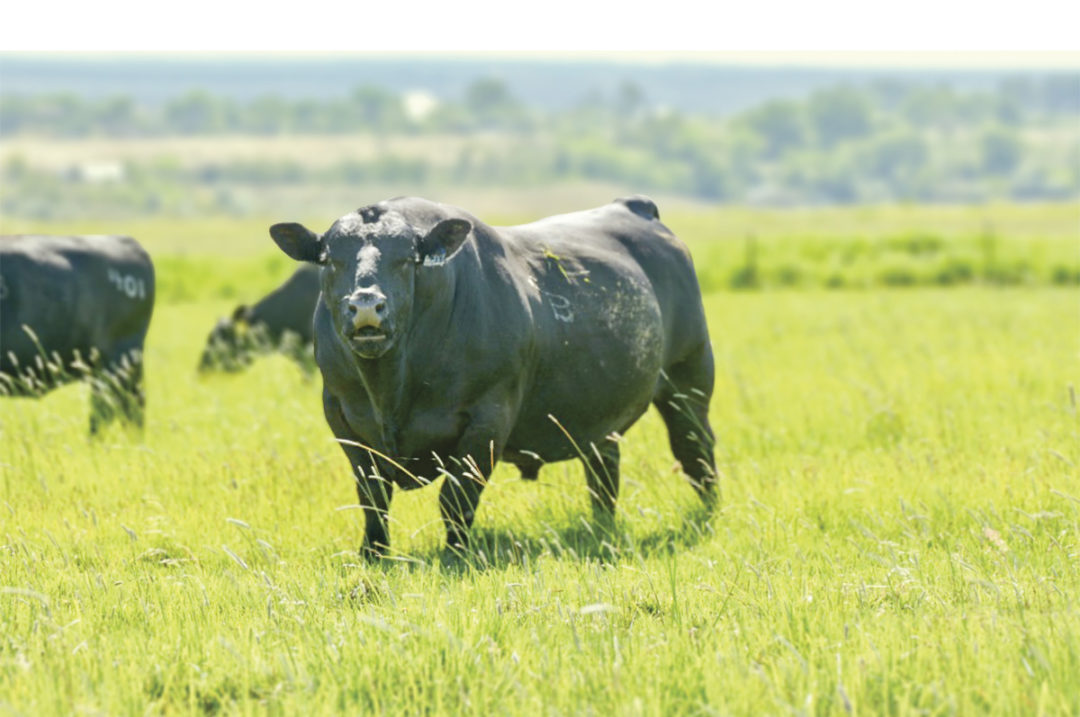Using an expected progeny difference (EPD) versus an animal’s phenotype is an ongoing debate among cattlemen. The use of an EPD or phenotype will depend on the production stage of an animal and what the animal would ultimately be used for. The question really boils down to whether the animal’s actual performance (phenotype) or the performance of its offspring is your primary interest.
Let’s take a step back and define phenotype and EPD. A phenotype is what we see – the actual performance of the animal. It is the combination of the animal’s genetic potential and environmental influences that affect gene expression. Environmental influences include management, grazing conditions, weather, feeding ration, etc. In a perfect world, you want to provide calves with the best management and environment to reach their genetic potential compared to an EPD, which is a tool for genetic selection. It is a prediction derived from the information from animal performance, progeny performance, pedigree and genomics to predict an animal’s genetic merit to be a parent.
For cattle destined for the feedlot and ultimately slaughter, the focus should be placed on phenotype. Calves should be evaluated on phenotypic performance at weaning through the feedlot. Whether selling calves at weaning or retaining ownership, you are ultimately paid for the calves’ actual performance. Although genetics play a crucial role in calf performance, the calf’s genetics are determined at conception, and it comes down to good management to maximize those genetics for performance. Although these calves are not contributing their genetics to the next generation, their performance can contribute to the genetic prediction of their sires and dams when reported back to breed associations for use in genetic evaluations.
When selecting replacement heifers or choosing a bull, there is sometimes a debate about whether to use performance or genetics. Since bulls and replacement heifers are generating the next generation of calves, the use of EPDs should heavily influence those decisions, but there are circumstances where using the animal’s phenotype should also be considered.
Let’s focus on the genetic aspect of a bull. A bull’s value is his potential to improve performance for the next generation of calves and his ability to get cows pregnant. His performance prior to his first breeding season (i.e., birth and weaning) is in the past. These phenotypes certainly tell us about his performance as a calf and yearling and, to a certain degree, how his offspring will perform.
Before EPDs, I agree that using phenotypes would have been a valid tool for selection. However, today’s widespread availability of EPDs provides a more precise and powerful tool for genetic selection, allowing for faster genetic gain than phenotypic selection. An EPD includes the bull’s own performance, as well as his genomic information and the performance of all his relatives. When investing in a bull, you want to know what his genetics will contribute to the performance of the next generation of calves. Regarding predicting the performance of the bull's offspring, an EPD is a far better tool for improving offspring than his own phenotypes. Remember, phenotype includes genetics and environmental influences; EPDs provide a tool that boils it down to genetics, which is passed on to the next generation.
So when should a bull’s phenotype be considered? It comes down to his survival, performance during the breeding season and a lack of an EPD for the phenotype of interest. The consideration of phenotype can be particularly important for natural-service bulls. When turning bulls out with cows and heifers, he needs to be able to get them bred. His ability to do this will depend on his physical soundness and fertility. In this case, the bull’s phenotype takes precedence over his EPD. Currently, there is no EPD for bull fertility, and only some breed associations publish EPD for structure. The bottom line is, if the bull is not able to get cows bred, it doesn’t matter what his EPDs are. Good bull development and breeding soundness exams are key management decisions that can significantly affect a breeding season.
If you are purchasing a bull to move to an operation in an environment that may affect his ability to survive and breed cows, his phenotype for survival should be considered heavily. An example would be operations at high elevations where high-altitude disease (also known as brisket disease) is a real concern for producers. Moving a bull from a low elevation to the high elevations of the Rocky Mountains runs the risk of that bull developing brisket disease. The publication of a PAP (pulmonary arterial pressure) EPD is currently being used to select against the incidence of brisket disease. When using semen for artificial insemination at high elevations, a producer should focus on the PAP EPD, since the primary focus would be the contribution of genetics to the next calf crop. However, if that producer were moving a bull to a high elevation, he would still focus on the EPD but would also need to consider the phenotype for PAP and the bull’s risk level of developing brisket disease when moved to higher elevations.
Brisket disease is just one example where the environment can interact with genetics and affect survivability. Different environments present different considerations, such as the southeastern U.S., where heat and pests may present challenges for bull survival. Consider the environment you would be moving a bull to and evaluate that bull’s ability to survive in that environment.
In general, when thinking about future performance, think about your genetic decisions. If the current performance is of concern, focus on the phenotype. When selecting bulls and replacement females, consider their EPDs for future generations, but keep in mind their current performance and set them up for success to produce the next year’s calf crop.









